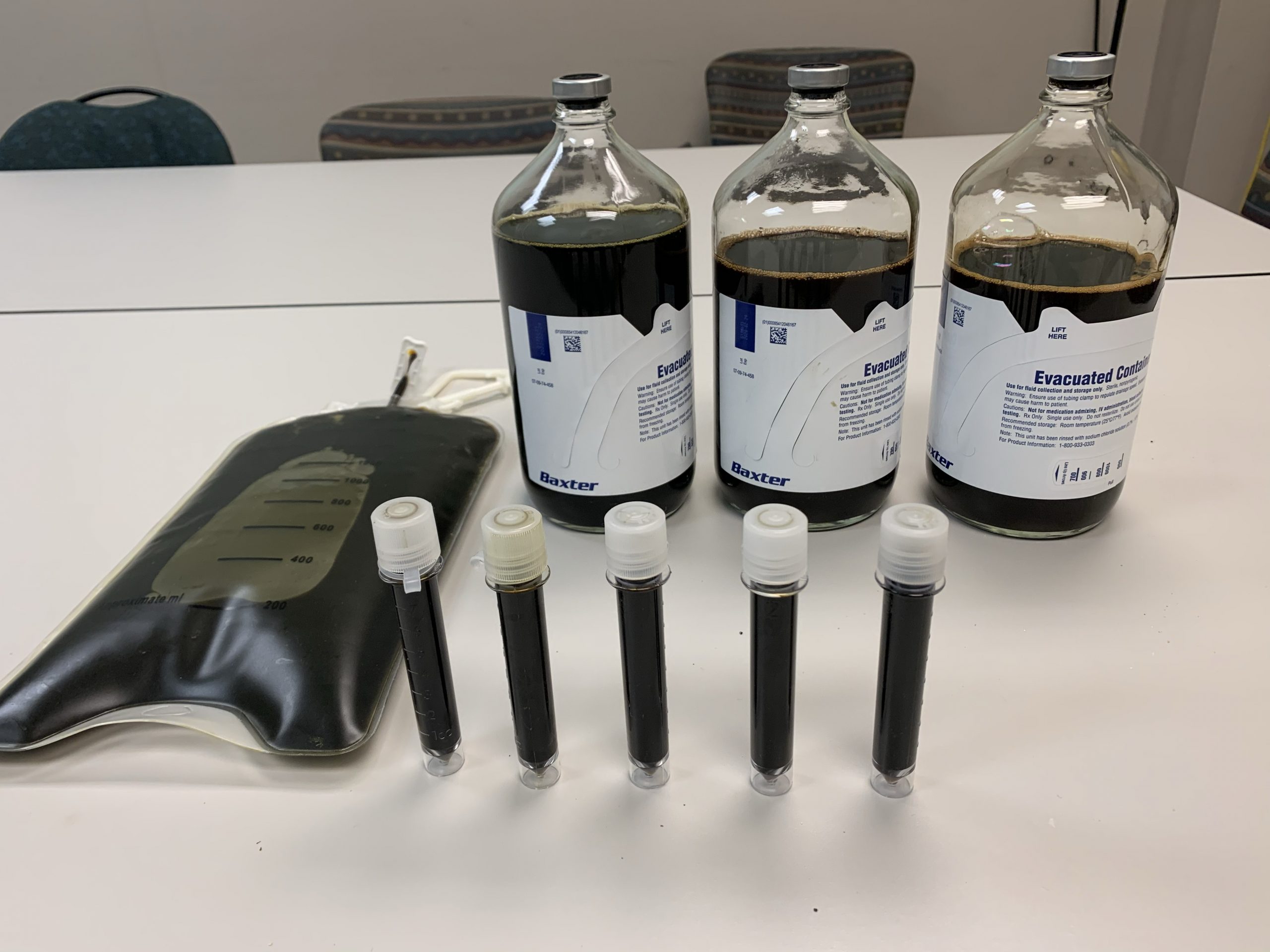Case Presentation: A 55-year-old man with Roux-en-Y gastric bypass surgery 15 years prior presented with acute pancreatitis. He quickly decompensated, developing distributive shock, bacteremia, acute respiratory distress syndrome, anuric acute renal failure, and was also noted to have a distended abdomen with increasing ascitic fluid on imaging. An elevated bladder pressure, lactic acidosis, and anuria raised concern for abdominal compartment syndrome. Paracentesis was done and four liters of bilious ascitic fluid were drained (see figure). Intra-abdominal pressure was measured and improved from 27 cmH2O to 13 cmH2O with paracentesis. Mean arterial pressure and urine output also improved. Analysis of the ascitic fluid showed significantly elevated total bilirubin, lactate dehydrogenase, and amylase. Unfortunately, the patient developed recurrent loculated intra-abdominal fluid collections and leukocytosis, which raised the suspicion for biliary perforation or a post-Roux-en-Y leak, though multiple imaging studies including ultrasound, CT scans with and without contrast, MRCP, ERCP, upper GI fluoroscopy, and small bowel enteroscopy failed to reveal a source of the bilious output. Ultimately, a gastrostomy tube was placed and delivery of contrast material through the tube revealed an active extravasation from the remnant stomach. The patient was eventually discharged home with one remaining intra-abdominal drain in addition to the gastric tube to allow for gastric decompression and spontaneous healing of the post-Roux-en-Y leak.
Discussion: Post-surgical leaks complicate up to 7% of Roux-en-Y gastric bypass procedures and they result in greater than 50% morbidity and mortality. Most leaks occur at the gastrojejunal anastomosis, and on average, they become symptomatic three days after surgery. While rare, leaks can also occur from the gastric remnant and can have delayed presentations, though cases reported prior to this one have generally occurred in the weeks after surgery. Diagnosing post-Roux-en-Y gastric remnant leaks can remain challenging even when they are suspected as demonstrated by this case and one other previously published. Our patient’s gastric remnant leak was identified only after contrast delivery through the gastrostomy tube; previous diagnostic studies and procedures were all non-diagnostic. Finally, although our patient’s distended abdomen, elevated bladder pressure, and anuria raised the concern for abdominal compartment syndrome, his abdomen remained soft. We therefore pursued paracentesis rather than exploratory laparotomy to both achieve an accurate assessment of the intra-abdominal pressure and drain the ascitic fluid, which resulted in a dramatic decrease in intra-abdominal pressure and improvement in end-organ perfusion and function.
Conclusions: This case underscores the importance of considering post-surgical leak as a diagnostic possibility regardless of how remotely a Roux-en-Y surgery took place. It also confirms the importance of pursuing early gastrostomy tube placement and contrast administration when post-Roux-en-Y gastric remnant leaks are suspected in order to allow for definitive diagnosis and appropriate treatment. Lastly, it demonstrates a diagnostic as well as therapeutic role of paracentesis in critically ill patients with abdominal compartment syndrome.

